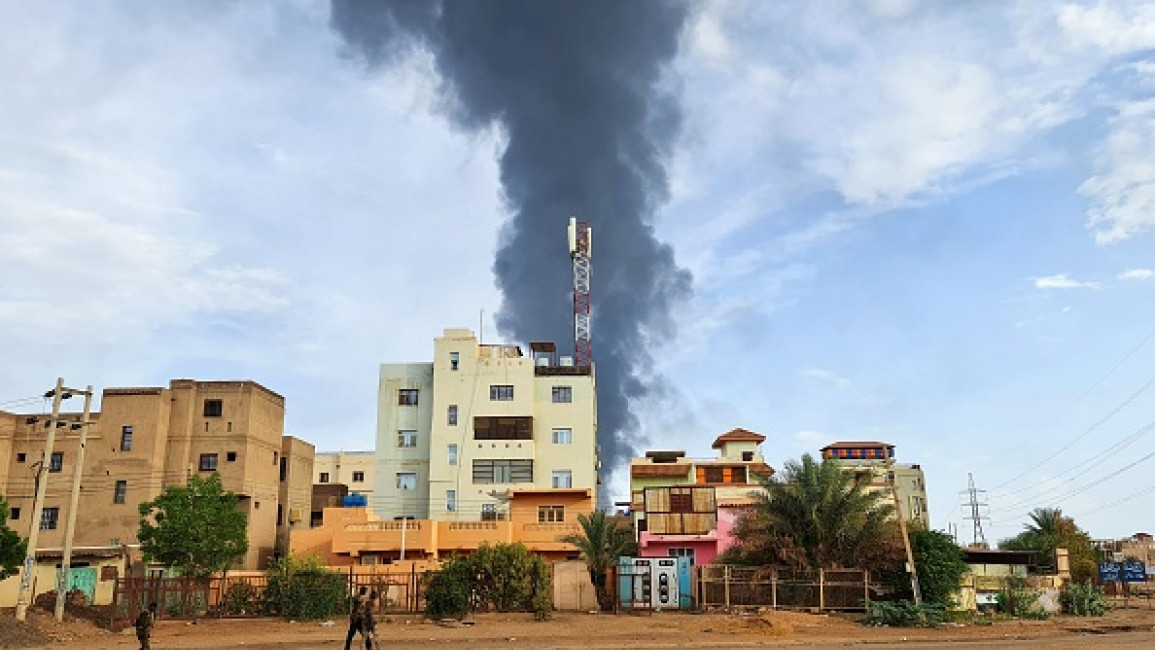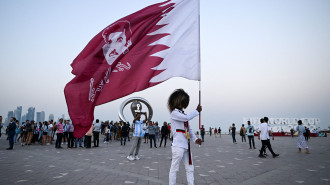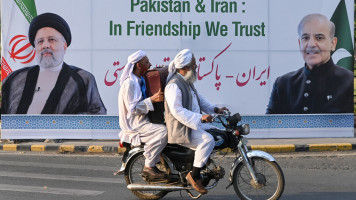
Will RSF drones tip the balance of Sudan's war?

The conflict in Sudan witnessed a remarkable development in mid-June when the Rapid Support Forces paramilitary group used armed drones in attacks, ending the Sudanese army's monopoly over the country's skies.
In addition to the destruction and the victims, these attacks have raised many questions about who supplied the drones and the expected impact on the balance of power if they are used again.
RSF drones in Khartoum's skies
In a remarkable statement, a military source in the Sudanese army said his forces shot down a drone that tried to attack the General Command in Khartoum on 22 June.
This was not the first time that the RSF has used this weapon, with Sudanese military sources confirming that the group targeted the headquarters of the Armored Corps in Khartoum on 13 June, resulting in a number of deaths after a hospital in the complex was struck.
"The conflict in Sudan witnessed a remarkable development in mid-June when the Rapid Support Forces paramilitary group used armed drones in attacks"
Additionally, the ‘Sudanese Military Capabilities’, a Twitter account supportive of the army, announced on 13 June that the Sudanese army had "downed a vertical drone belonging to the RSF militia that was throwing 120 mm mortar bombs".
It was remarkable that the account confirmed that the RSF had previously used drones in "military operations".
Later, this account tweeted again on 21 June that the Central Reserve Forces had managed to shoot down an "intrusive drone" while the RSF was bombing a camp belonging to the Central Reserve Forces, adding that the armed forces managed to "seize dozens of drones that were on their way to Khartoum to support the RSF militia".
Where did these drones come from?
Mystery surrounds the source of the RSF’s drones, and despite pictures of the downed weapons being published, their origins are still unknown.
The first assumption seems to be that the RSF obtained them from the Sudanese army camps of which they took control, based on a statement from an RSF source to Agence France Presse, in which he confirmed that they obtained the drones "from the army centres that we controlled".
Another military expert told AFP that the RSF obtained them from the Yarmouk Factory for Military Industries south of Khartoum.
The RSF announced they had taken control of the Yarmouk complex on 7 June, which the Sudanese Armed Forces denied.
|
|
Strategic military expert Major General Dr Amin Ismail Majzoub told Sky News Arabia that this complex is of “great importance from a military strategic point of view," noting that it is “part of the Sudanese military industrialisation system, and is characterised by modern technologies".
However, other evidence links these drones to the United Arab Emirates (UAE), the main ally of the RSF. War Noir, a Twitter account specialising in monitoring conflicts, weapons and illegal arms sales, stated that the drone that was shot down by Sudanese forces “was armed with 120mm TB Thermobaric air drop shells with UT M18 fuzes".
These missiles, according to War Noir, were manufactured in Serbia in 2020 and were later sold to the United Arab Emirates.
"The attacks carried out by RSF drones have prompted a discussion about the significance of their impact"
In another tweet, the account published a video of the Sudanese army taking control of some of the RSF's weapons stocks which contained the same type of missile.
Additionally, Vleckie, a Twitter account that tracks the use of drones in conflicts, displayed pictures of drones that were shot down by Houthi fighters in Yemen, as well as drones used by Ethiopian forces in the Tigray war.
The account concluded that “the same drone that has been used by UAE-backed forces in both Yemen and Ethiopia has now also turned up in Sudan, used by the RSF, which is again a UAE-backed force".
How did these drones reach Sudan?
It seems likely that the RSF bought these drones from Yemen, which has turned into a thriving market for weapons, and transported them through smuggling networks across the Red Sea to Sudan. It is already known that the RSF fought on the side of the Arab coalition.
This assumption is supported by the Sudanese army's announcement in May that it had confiscated a shipment of weapons smuggled from a foreign country, according to a Sudanese military official's statement to Reuters, which may indicate that they were smuggled across the Red Sea.
On the other hand, smuggling drones through neighbouring Eritrea is another possibility. Omar Zerai, director of the Horn of Africa Network for Studies and Media, does not rule out the existence of cooperation between Eritrea and the RSF, given the close relations that bind the two parties with the United Arab Emirates.
“There are unconfirmed reports that the RSF have transferred part of their forces from Yemen to Eritrea with the calm of the war in Yemen and that these forces may be transferred at a later stage to Sudanese territory,” Zerai told The New Arab.
|
|
In a similar context, authorities in Sudan’s Kassala state, neighbouring Eritrea, announced a day after the drone was shot down in Khartoum that military intelligence and National Intelligence Service forces seized "large quantities of weapons, ammunition, and advanced military equipment that were on their way to the Rapid Support militia".
These included lethal weapons, according to the commander of the 11th Infantry Division, Major General Hassan Abu Zeid, with some observers saying that they were smuggled across the border from Eritrea.
Libya is another potential route for arms smuggling to the RSF by General Khalifa Haftar's forces in the eastern and southern parts of the country, as the two sides have strong relations within a broader axis that includes both the UAE and Russia, which have a strong presence in areas under Haftar’s control.
A Libyan political analyst, who asked to remain anonymous, believes that the latter supports the RSF in various forms, “including money, weapons, logistical support, and money laundering".
The analyst explained that there are reasons for this mutual support between the two parties, "as General Haftar has had a relationship with the RSF since the Chad wars, and the two parties also share the mentality of militias that provide support in exchange for common interests, and the two parties also share the same backer, the UAE which in some way controls both, without forgetting the Israeli influence”.
Is it a turning point?
The attacks carried out by RSF drones have prompted a discussion about the significance of their impact.
Mohammed Torshin, a Sudanese researcher and analyst in security and political affairs, told The New Arab that it "undoubtedly constitutes a prelude to rapid developments in the course of the crisis," adding that the images that have been circulated prove that these drones are not advanced, which means they aren’t necessarily that effective.
However, on a strategic level, if the RSF were to obtain modern Turkish or Iranian drones it would alter the balance of power in the conflict, Torshin says, making “Sudan more like Somalia, and turning it into a gateway to criminal networks and terrorist groups, which will seriously threaten the security and stability of the region".
Abdolgader Mohamed Ali is an Eritrean journalist and researcher in African Affairs.
Follow him on Twitter: @AbdolgaderAli

![Dagalo [AFP via Getty] Dagalo [AFP via Getty]](/sites/default/files/styles/large_16_9/public/media/images/659FD6DB-E7D9-44A7-B1EE-380EEC88B534.jpg?h=d1cb525d&itok=hb7eK8nw)


